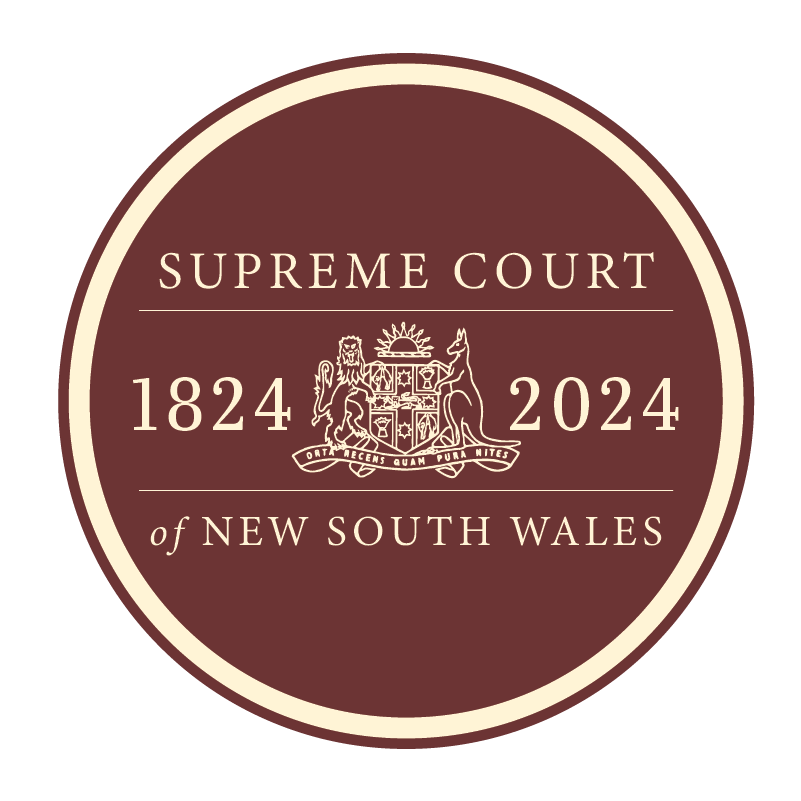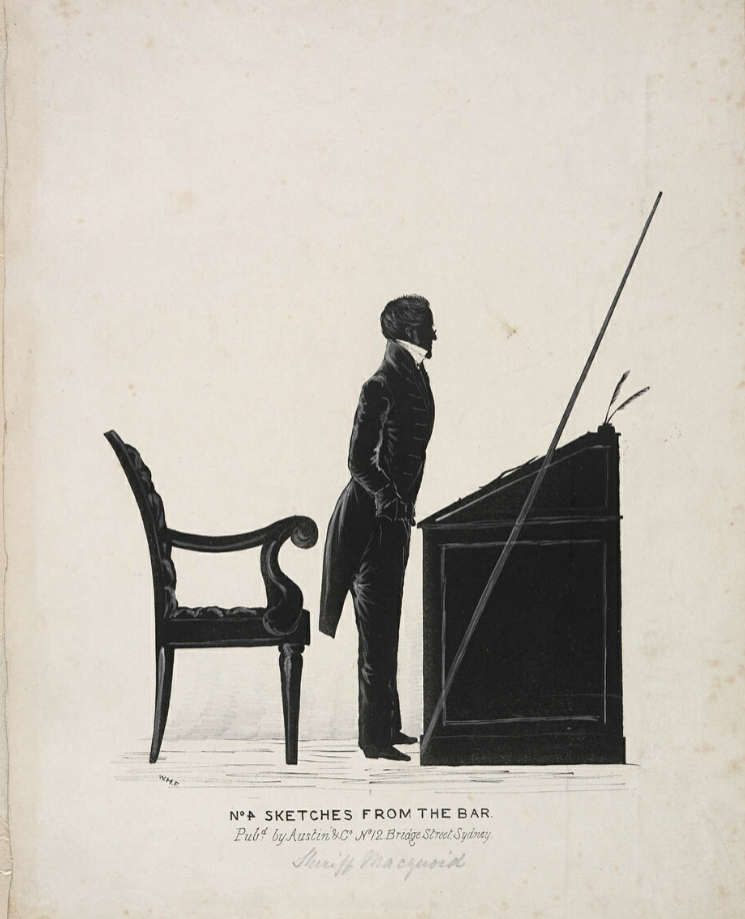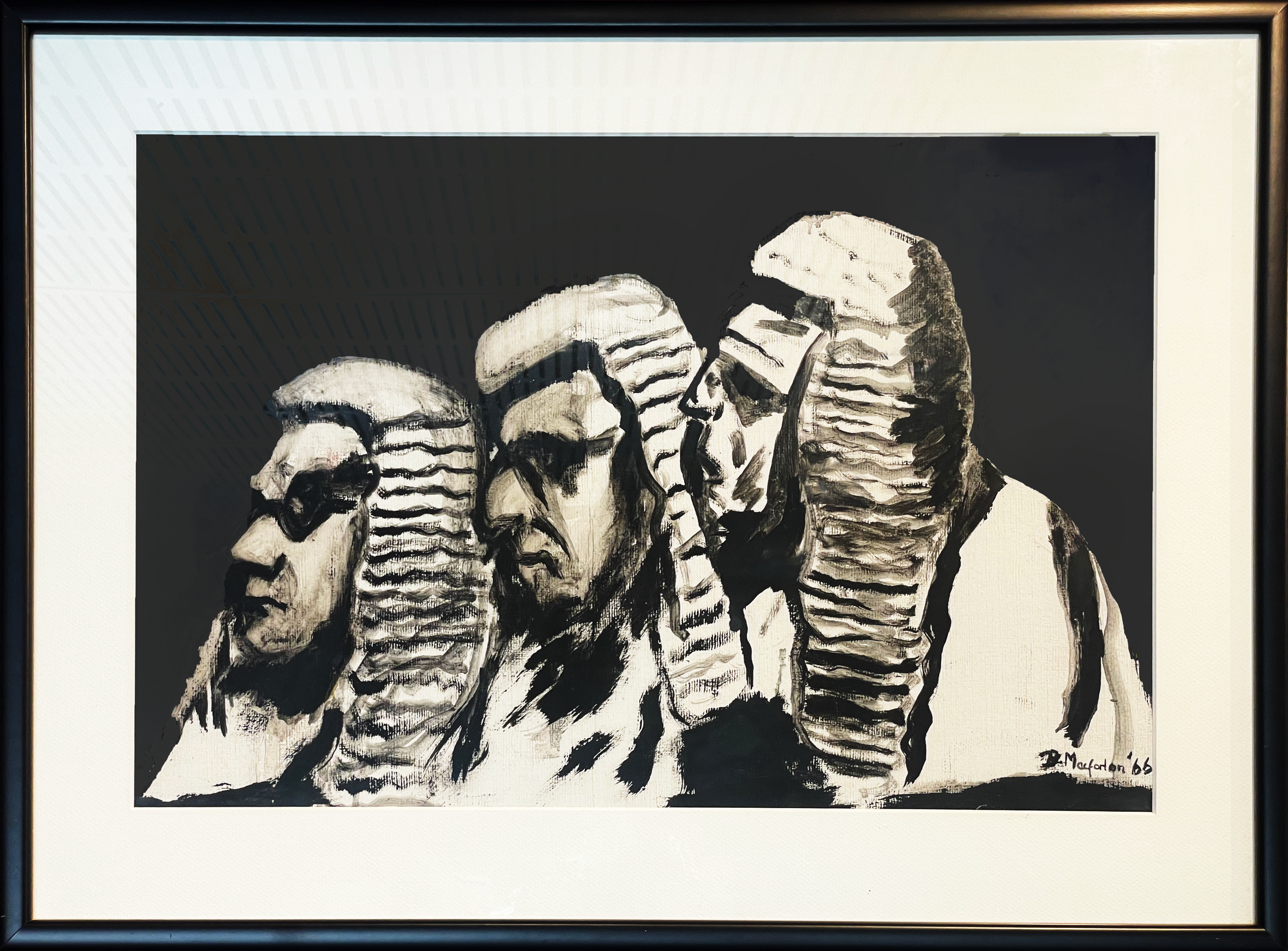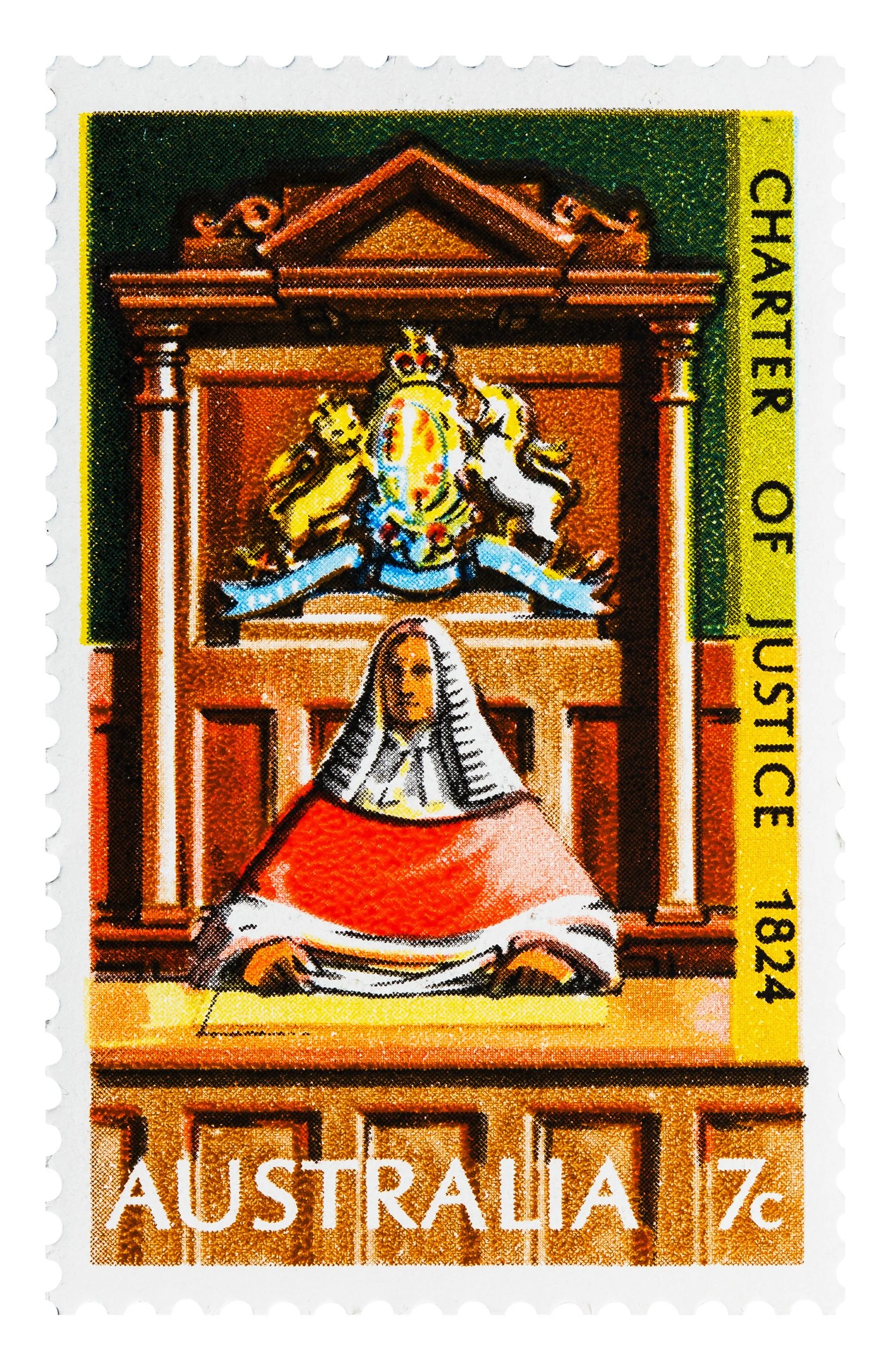W. H. Fernyhough (1812-1849) produced silhouette portraits of notable Sydney personalities and Aboriginal Australians, and is credited with having introduced zincography to New South Wales. Produced. The portrait from his collection No. 4 Sketches from the Bar, currently owned by the State Library, depicts Sheriff Macquoid.
Sheriff Macqoiud was appointed High Sheriff of New South Wales in 1829 however his term was marked with controversy surrounding low salary, issues of liability and excessive workload. His term as Sheriff ended tragically with his suicide in 1841.
Print on paper
c.1836
No. 4 sketches from the Bar. Sheriff Macquoid
W. H. Fernyhough
Philip William May (1864 – 1903) was an English born cartoonist who worked in Sydney and Melbourne for three years in the late colonial period. During this period, he produced over 800 drawings for the Bulletin, which combined satire, sympathy and accurate detail of the contemporary political personalities and events.
The Divorce Extension bill was introduced to the Legislative Council in 1886 by Alfred Stephen, who was a strong advocate for extending grounds of divorce. The bill sought to extend grounds to cover desertion, habitual drunkenness, imprisonment for at least seven years, and assault. Although the bill was rejected, he reintroduced every session of the Legislative Council until it was passed in the session of 1891-1892 as the Divorce Amendment and Extension Act.
Lithograph on paper (reprinted)
1882
Alfred Stephen Divorce Extension Act
Phil May
Cartoon by caricaturist Phil May (1864-1903) printed in the Bulletin, a satirical Australian magazine which ran from 1880 to 2008. Phil May defined the 20th century style of cartooning through is work for the Bulletin in the 1880s, creating a cartooning tradition in Australian which exist to this day.
The illustration is believed to depict English-born Australia judge Sir William Charles Windeyer (1834-1897). Appointed a temporary judge of the Supreme Court in 1879, he sat in common and criminal law, as judge in Divorce and as deputy-judge in the Vice-Admiralty Court. Despite his competent and careful judgements, he proved controversial in criminal cases. He was unrelenting in retribution and has a sympathy for victims of crime. Noteably, he sentenced nine young men to death in the Mount Rennie rape case, which caused public outcry.
Lithograph on paper (reprinted)
1887
The Bulletin Christmas Tree
Phil May
This drawing by Franke Dunne (1898 – 1937) is a part of the Chau Chak Wing Museum collection. The profile portrait of Sir William Portus Cullen, seventh Chief Justice of NSW, was drawn during his appointment.
Sir William Cullen (1855-1935) was called to the New South Wales Bar in 1883 before taking high rank at the Equity Bar. He appeared before the Supreme Court of New South Wales and the High Court on a number of landmark cases including the Union Label case, eventually becoming a leading barrister in the High Court. In January 1910, he was appointed the seventh Chief Justice of New South Wales, and in March of the same year he was appointed Lieutenant-General. He had a successful judicial and political career in these roles, and was known for worthily upholding traditions of the court and administering the law with excellent knowledge and sound judgement.
Graphite and ink on paper (reprint)
1923
Sir William Portus Cullen
Frank Dunne
Drawing by Barbara Macfarlan, wife of Justice Bruce Macfarlan, depicting three wigged and gowned judges of the Supreme Court. It was gifted to the Supreme Court of New South Wales by Robert Macfarlan in 30 January 2024. Bruce McFarlan was admitted to the New South Wales Bar in 1936 and was appointed to the Supreme Court in 1959 where he served as Judge in Admiralty and Judge in Commercial Causes.
Charcoal on paper
1966
3 Supreme Court judges
Barbara Macfarlan
Wood etching of Sir Frederick Darley (1830-1910), sixth Chief Justice of New South Wales and Lieutenant-Governor. Born in Ireland, he arrived in Sydney in 1862. He was admitted to the New South Wales Bar the same year and appointed Queen’s Counsel in 1878. In 1886 he was appointed Chief Justice of New South Wales, not before turning down the role once prior. He retired from the role in 1910.
In addition to his role in the judiciary, he served at Lieutenant-Governor of New South Wales and was a member of the New South Wales Legislative Council. He was a regular participant in debates, and introduced a number of progressive acts including reforms on marriages and divorce.
Wood etching on paper
1886
Mr. Darley, Chief Justice of New South Wales
Unknown artist
The commemorative postage stamp was issued in 1974 by Australia Post to commemorate the 150th anniversary of Australia’s Third Charter of Justice. Designed by Tom Thompson, the stamp depicts a wigged and robed judge at a bench under the Supreme Court of New South Wales Court of Arms.
Postage stamp (enlarged reprint)
1974
Charter of Justice 1974
Tom Thompson
Court sketch for a newspaper depicting the trial of William Dobel, recipient of the Archibald Prize in 1944. Following the conclusion of World War II, the people of Australia were engrossed by a four-day trial before the Supreme Court involving the award of the Archibald Prize to Dobell. Two finalists, Mary Edwards and Joseph Wolinski challenged the decision on the grounds that the portrait of Joshua Smith was not a portrait, but a caricature. The trial before Justice Roper featured two of the most talented barristers of the day, Garfield Barwick and Frank Kitto, both of whom became High Court judges. The Court upheld the decision of the Trustees of the Art Gallery of New South Wales, but the intense public scrutiny and pressure of the trial took an immense personal toll on Dobell.
Ink on paper
1944
Dobell Trial Court Sketch
Unknown artist
The Trial of Frank Gardiner, the Bushranger, at the Supreme Court
Unknown artist
Print on paper (reproduced)
1864
Court sketch printed in a newspaper depicting the trial of Frank Gardiner, an infamous Australian bushranger who led the robbery of a gold escort of Eugowra in 1862, the largest gold heist in Australian history. In 1864, he was arrested for the shooting of policemen John Middleton and William Hosie, with the trial lasting several months. Gardiner was found guilty and sentenced to a total of 32 years in prison. Some thought the punishment was too harsh, and after 10 years’ imprisonment a petition was submitted to the NSW Parliament urging for his release. He was released from prison in 1874 and a week later left for San Francisco, California.









